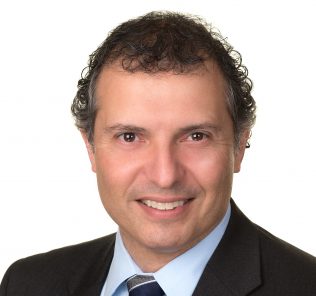

With a national pharmacare program potentially on the horizon, many plan sponsors will be wondering about the impact on their benefits plans.
At Benefits Canada‘s Calgary Benefits Summit on May 29, Joe Farago, executive director of health-care innovation at Innovative Medicines Canada, discussed some of the implications of national pharmacare.
Farago began his session by outlining some of the recommendations in a recent report on pharmacare by the House of Commons’ standing committee on health. Among other things, it proposed a single-payer program involving separate provincial drug plans operating under a common national formulary.
Read: Commons committee recommends national pharmacare program
“There’ll be no private coverage, except for things that fall outside the national formulary,” Farago told the audience at Calgary’s Fairmont Palliser hotel.
Just what that formulary will look like will be a key question, according to Farago. Some pharmacare proponents, he noted, have referred to the World Health Organization’s list of essential medicines.
“It includes only a total of 125 drugs on it,” said Farago, noting the list doesn’t include drugs to treat cancer.
Other options, according to Farago, include using the public drug formularies in provinces like Quebec and Alberta or covering all approved drugs. But as he pointed out, there are key differences between public and private drug plans. He noted, for example, that listing new drugs takes three times as long on the public side in comparison to private plans.
In addition, private plans cover a significantly higher number of drugs, said Farago, who noted they also tend to consider a wider range of factors in determining what to list on their formularies. They include convenience, limiting disability claims, productivity and industry competitiveness, whereas public programs to tend emphasize issues such as budget impacts and comparative clinical effectiveness.
Read: The great pharmacare debate: An ‘overly simplistic’ solution or needed system rationalization?
During his presentation, Farago also spoke of a December 2017 study released by the Conference Board of Canada and the Canadian Alliance for Sustainable Health Care on drug coverage in Canada. According to Farago, the uninsured population in Canada is more than 600,000 people or 1.8 per cent of Canadians. As he noted, however, many people are, in fact, eligible for public drug programs but don’t enrol in them.
At the same time, he referred to findings that seven per cent of respondents reported having had a prescription in the previous six months but they didn’t take it as prescribed. Many of them, Farago noted, weren’t aware of public drug programs, with only seven per cent citing cost or affordability as the reason for their non-adherence.
Besides issues around drug coverage, Farago also updated plan sponsors on cost predictions for the coming years. He cited data on drug costs from IQVIA Inc. that put the compound annual growth rate at 4.9 per cent over the period spanning 2017-19. Factors moderating cost increases, he said, include the recent deal involving the pan-Canadian Pharmaceutical Alliance (pCPA) to lower generic drug prices that will result in a 3.5 per cent reduction over the first 12 months. But a key but often-ignored driver of costs has been, and will continue to be, increased utilization and a rising number of claimants.
“Utilization accounted for 75 per cent of the growth in drug costs in the IQVIA research,” he said, citing an upcoming report’s findings of a 4.7 per cent average annual rise in drug costs from 2012-16.
Read: HR, benefits lessons from the 2016 Fort McMurray wildfire
Asked about the potential for further savings from deals to buy more drugs in bulk as part of pharmacare, Farago said governments already have mechanisms in place, such as the pCPA. He also noted insurers can negotiate directly with drug manufacturers.
“The Canadian market represents less than two per cent of the global market and needs to be taken in context of how global prices are set,” he said, suggesting a move to lower prices too much could limit access to new drugs in Canada and change Canada’s status as a top market.
“I can tell you, the innovation that’s coming, we’re going to want,” said Farago.
Correction: This story originally had the uninsured population at 18 per cent of Canadians. In fact, the correct number is 1.8 per cent of Canadians.
